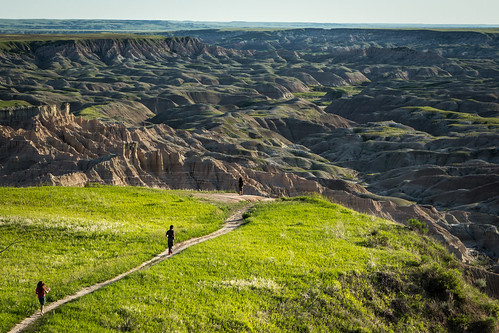
As a law student, I spent a summer working and living with the Sokoagon Band of the Chippewa, a Native American tribe located in rural Northern Wisconsin. Tribal leaders and members extended to me their kindness, friendship, passion and laughter. They are some of our country’s finest.
But, make no mistake, the Sokoagon face challenges shared by many persistently poor rural communities across our country.
That summer, I saw with new eyes the importance of dependable and consistent employment, housing, health care systems and education. That summer I also saw that for many rural Americans these things, taken for granted by many, are luxuries.
These agents of economic development are not only critical to a person’s economic success, they are necessary to the success and fate of all people and thriving communities. While our nation is in the heart of a strong economic recovery, too many of our rural communities continue to struggle to build a resilient middle-class.
For decades, rural Americans have worked harder and harder, yet found it increasingly more difficult to get ahead in our modern economy. As a means to uphold his commitment to rural America, the Promise Zone Initiative is part of President Obama’s plan to create a better bargain for the middle-class.
This Initiative is driven by three core principles: 1) engage and partner with communities, 2) build community capacity for planning and implementation, and 3) learn from what worked and what didn’t. As we round out the holiday season and gear up for a new year, let’s first start by looking back on the past year and highlight our Promise Zones’ exceptional work.
At the heart of the Promise Zone initiative are communities and middle- and low-income families. Many are on the cusp of success, but need the right tools to create jobs, expand educational opportunities, increase economic activity, leverage private investment, and reduce violent crime.

Last year, President Obama emphasized that communities make the greatest progress when we “bring together local government and nonprofits and businesses and teachers and parents around a shared goal,” and when, “[All hold] themselves accountable by delivering measurable results.” Our first four rural and tribal Promise Zones, Choctaw Nation of Oklahoma, Kentucky Highlands, South Carolina Low Country, and Pine Ridge Reservation of the Oglala Sioux Tribe are yielding substantial results.
Accessible local food is a staple in American culture. The Kentucky Highlands Promise Zone’s has seen enormous strides in developing a strong local food economy. In early July, local partners of the Kentucky Highlands Promise Zone announced the creation of a low-interest loan fund for small farmers in the 54-county SOAR region of eastern and southern Kentucky. Investments like these mean real opportunities for small growers who want to make strategic investments in expanding their operations.
Like electricity was 80 years ago, access to broadband service in rural America can make or break a community. Broadband is no longer a luxury, but a critical piece of infrastructure. In early July 2015, President Obama announced the ConnectHome initiative, selecting the Choctaw Nation as one of the pilot areas where the federal government and the private sector would partner to expand high-speed broadband. Today, the ConnectHome initiative is making a real difference in people’s lives, linking homes and businesses to a world beyond the small communities of the Choctaw.

Revitalizing a stagnant rural economy is tough without critical investments attracting good-paying dependable jobs. The South Carolina Low Country Promise Zone knows this first-hand. Recently, USDA invested over $8 million in water and waste infrastructure in Hampton County, South Carolina, supporting the development of a regional industrial park. In total, the Promise Zone reports a whopping $312 million in capital investment and 153 jobs created since September 2015.
For communities focused on the bread and butter of economic recovery, planning is fundamental. The Pine Ridge Indian Reservation is opening a planning office to ensure investments are harnessed and deployed effectively. The Pine Ridge Promise Zone has received federal technical assistance and investments to help build basic infrastructure such as water and waste systems and vital community facilities supporting a tribal college and the Oglala Sioux Tribe’s public safety system.
As we look toward our third and final round of applicants, the impact of the Promise Zone initiative on these four American communities is powerful. Our communities, federal agencies, and partners will continue to work alongside one another, providing boots-on-the-ground partnership and access to the vital resources necessary to make good on our shared promise.
Those interested in learning about how to apply for the third and final round of Promise Zone designations can join the Rural or Tribal webinars, or view the recorded webinars online in coming weeks. Click on the link to register.
Rural Promise Zone Competition Informational Webcast
Wednesday, January 13, 2016
1:30pm-2:30pm EST
Tribal Promise Zone Competition Information Webcast
Wednesday, January 13, 2016
3:30pm-4:30pm EST
Promise Zones Competition Mapping Tool and Max Survey Informational Session for applicants
Thursday, January 14, 2016
2:00pm-3:00pm EST

